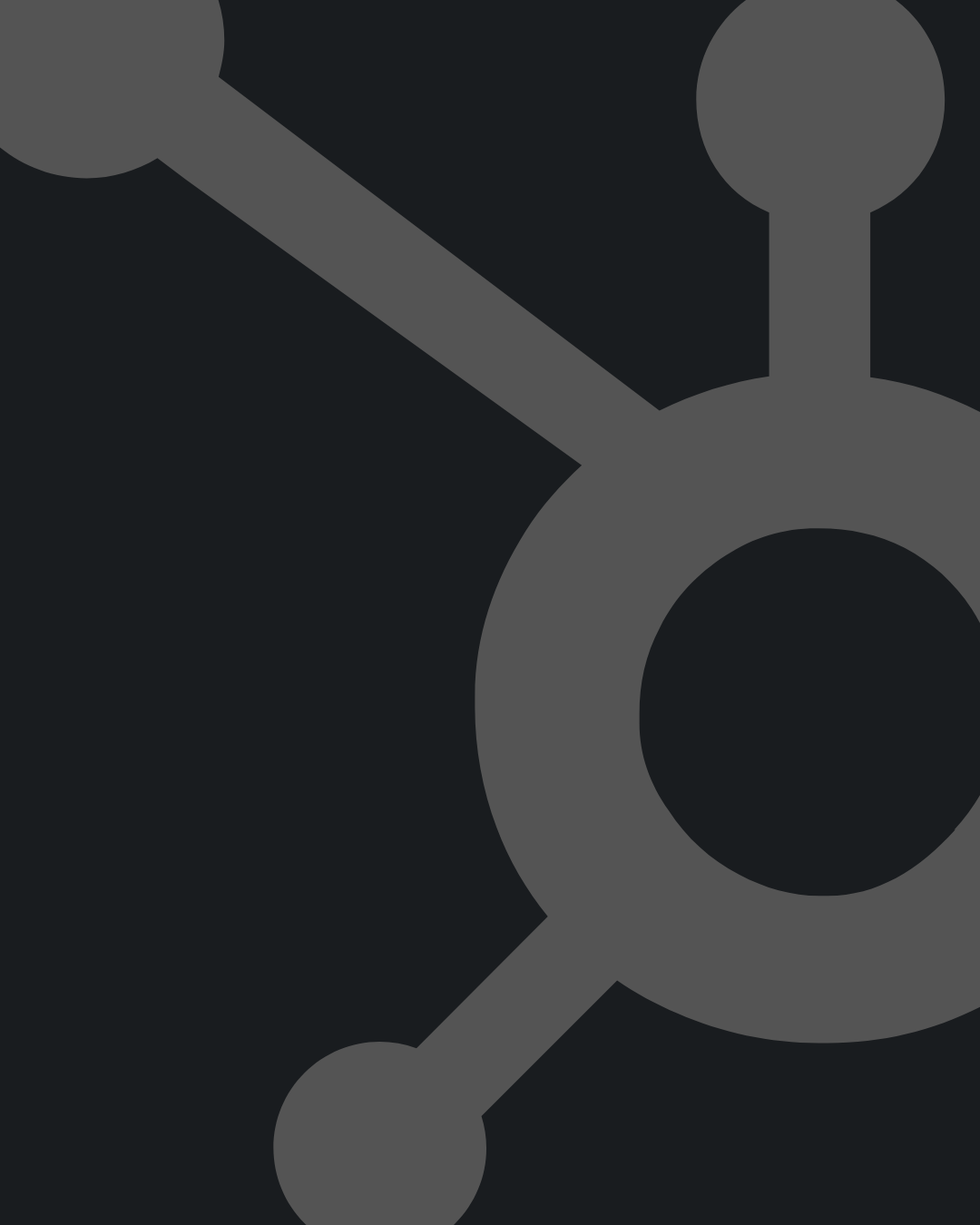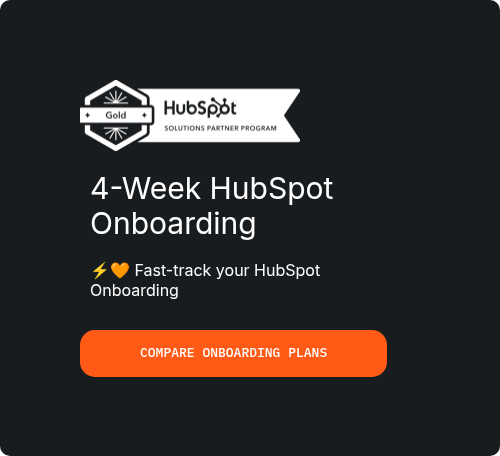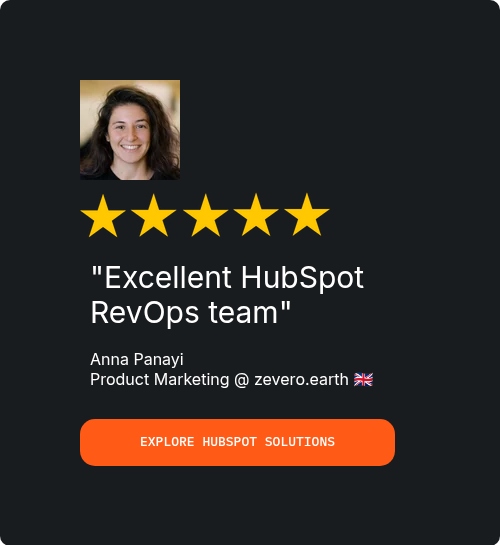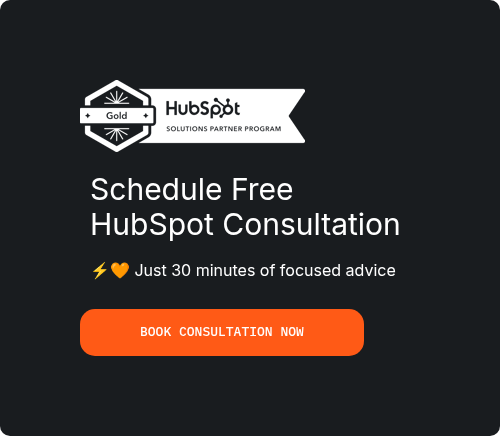
What is HubSpot Operations Hub?
In today’s competitive market, businesses need tools that streamline their operations, improve team collaboration, and support scalable growth. HubSpot Operations Hub stands out as a comprehensive solution, offering features that simplify processes and enhance efficiency.
Managing operations with disconnected systems often leads to errors and inefficiencies. The HubSpot Operations Hub features address these pain points by enabling automation, seamless data synchronisation, and team alignment.
These capabilities are critical for businesses aiming to maintain agility and consistency across departments. According to a study, 34% of marketing professionals mention an increase in the number of leads as well as quality as a benefit of marketing automation.
Integrated with HubSpot’s Professional and Enterprise tiers, the Operations Hub extends your CRM’s functionality, making it an indispensable asset for managing complex workflows. By leveraging HubSpot Operations Hub onboarding, organisations can fully utilise its capabilities to optimise business processes and stay ahead in 2025.
Let’s dive into why maximising HubSpot’s Operations Hub can be a key step toward operational excellence.
Understanding HubSpot Operations Hub
The HubSpot Operations Hub is a cornerstone of the HubSpot ecosystem, designed to streamline and centralise operational tasks while enhancing overall organisational efficiency.
It caters to businesses looking to eliminate inefficiencies caused by disparate systems, allowing teams to work seamlessly together.
Core Functionalities of HubSpot Operations Hub
-
Data Syncing
At the heart of Operations Hub is its two-way data sync, which supports over 100 integrations. Unlike traditional data transfer tools, this feature ensures that changes made in one system are automatically updated across others in real time.- Example: Synchronise customer data between HubSpot and third-party CRMs or marketing tools without manual imports or risks of data silo

- Example: Synchronise customer data between HubSpot and third-party CRMs or marketing tools without manual imports or risks of data silo
-
Custom Automation
Operations Hub expands automation possibilities, enabling businesses to create workflows beyond the default CRM capabilities.- Automate tasks like lead assignment, deal tracking, or data updates using advanced triggers and conditions.
- Integrate external apps and APIs to build workflows that cater to your unique business requirements.
-
Data Cleansing
Maintaining clean and reliable data is critical for informed decision-making. The Operations Hub includes tools to automatically detect and merge duplicate contacts or companies, ensuring data accuracy.- Validate formats, standardise fields, and remove errors in your database, saving time and avoiding manual corrections.
- Validate formats, standardise fields, and remove errors in your database, saving time and avoiding manual corrections.
-
Programmable Automation
For businesses with complex needs, programmable automation offers limitless flexibility.- Custom code actions within workflows allow advanced logic to be applied directly within the HubSpot environment.
- Use Case: Implement sophisticated billing systems or calculate real-time metrics using external data sources.

How It Complements Marketing, Sales, and Service Hubs
By aligning with other hubs in the HubSpot ecosystem, Operations Hub enhances every stage of the customer journey:
- Marketing Hub: Delivers consistent data for personalised campaigns, ensuring accurate targeting.
- Sales Hub: Automates deal updates and provides clean, unified records for informed follow-ups.
- Service Hub: Empowers teams with precise customer histories, reducing resolution times and improving satisfaction.
With these capabilities, the HubSpot Operations Hub features empower organisations to operate at their best while reducing bottlenecks and errors across teams.
HubSpot Operations Hub Features Overview
The HubSpot Operations Hub offers an advanced suite of tools to elevate business processes, making it an indispensable asset in 2025 for companies aiming to operate efficiently at scale. With a focus on precision and flexibility, its features cater to a variety of operational challenges while integrating seamlessly into your existing tech stack.
Key Features of HubSpot Operations Hub
-
Automation: Redefining Operational Efficiency
The automation capabilities of HubSpot Operations Hub set it apart from competitors, offering advanced workflow customisations that go beyond traditional CRM tools.- Programmable Automation: Use custom-coded workflows to address complex scenarios like multi-platform order tracking or dynamic discount calculations.
- Advanced Triggers and Actions: Automate recurring tasks like syncing subscription data or triggering alerts for overdue payments.
Example: A business using the Operations Hub can automatically update inventory levels across systems when a sale is made, eliminating delays.
-
Data Management: Ensuring Real-Time Accuracy
At the core of the Operations Hub is its powerful real-time data syncing and cleansing tools, ensuring your databases remain accurate and actionable.- Two-Way Sync: Keep customer and operational data synchronised across platforms, supporting more than 100 third-party integrations.

- Data Cleansing: Automatically merge duplicate records and standardise data formats to minimise errors and redundancies.
Use Case: A global retail company ensures that customer purchases and returns are updated across sales and support teams, improving service and reporting accuracy.
- Two-Way Sync: Keep customer and operational data synchronised across platforms, supporting more than 100 third-party integrations.
-
Custom Integrations: Tailored Connectivity
With its support for custom integrations, HubSpot Operations Hub offers unparalleled flexibility for integrating with third-party tools and APIs.- Connect operational workflows to platforms like ERP systems or payment processors.
- Customise integrations to fit niche business requirements using HubSpot’s open APIs.
Example: A subscription-based business links its billing system with Operations Hub to streamline recurring invoice generation and payment follow-ups.
-
Scalability: Built for Growth
HubSpot Operations Hub is designed with scalability in mind, ensuring its features grow alongside your business.- Support for larger datasets and increased automation capabilities cater to businesses expanding into new markets.
- The platform’s infrastructure accommodates advanced operational needs, such as high-volume API calls for enterprise-level tasks.
Use Case: A scaling SaaS company integrates Operations Hub to manage customer onboarding workflows for hundreds of users monthly.
HubSpot Operations Hub Use Cases
Businesses across industries leverage the HubSpot Operations Hub to streamline their operations:
- E-commerce: Automate order processing and ensure real-time inventory updates across sales channels.
- SaaS Providers: Sync customer usage data to trigger upsell workflows or provide proactive support.
- Service Companies: Clean customer databases to personalise interactions, boosting satisfaction and retention.
In fact, companies implementing automation can save up to 240 hours per year per employee on manual tasks, optimising operational efficiency and focusing on strategic goals.
By combining automation, precision in data management, and the flexibility of integrations, the Operations Hub ensures businesses can meet operational challenges head-on, making it a critical tool in the HubSpot ecosystem.
HubSpot Enterprise vs Professional: Operations Hub Capabilities
HubSpot's Operations Hub is available in two primary tiers - Professional and Enterprise - each tailored to meet the distinct operational needs of businesses. Below, we detail how the capabilities of Operations Hub vary between these tiers, focusing on features essential for data management, workflow automation, integrations, and scalability.
Workflow Automation: Advanced Customisation vs. Essentials
-
Operations Hub Professional:
Professional users can automate up to 300 workflows, enabling efficient handling of recurring tasks such as lead distribution or data enrichment. It includes basic custom-coded actions, suitable for businesses seeking operational flexibility but with moderate complexity. -
Operations Hub Enterprise:
The Enterprise tier takes automation further, offering unlimited workflows and introducing programmable automation. This feature allows developers to write custom code within workflows, handling advanced use cases like multi-system integrations or specific data manipulations that go beyond out-of-the-box functionality.
Data Sync and Management
-
Operations Hub Professional:
Real-time two-way data syncing supports over 150 popular apps, ensuring your CRM remains consistent across platforms. The Professional tier includes data cleansing tools to handle duplicates and standardise property values. -
Operations Hub Enterprise:
While Professional provides robust syncing, Enterprise excels in data governance with features like datasets, enabling users to create reusable, curated datasets for reporting and workflow purposes. These tools are particularly beneficial for large businesses managing extensive or complex data ecosystems.
Integration and API Access
-
Operations Hub Professional:
With support for 100,000 API calls per day, the Professional tier facilitates integrations with most third-party tools. However, it is geared towards businesses with moderate integration demands and standardised processes. -
Operations Hub Enterprise:
Enterprise supports 1,000,000 API calls per day, ensuring seamless integration for businesses requiring high-volume data transfers or complex system architectures. It also includes custom objects, enabling businesses to model and manage unique datasets beyond standard CRM records, such as assets or subscriptions.
Data Governance and Security
-
Operations Hub Professional:
Includes basic data privacy and security controls like GDPR compliance and role-based permissions. While sufficient for SMBs, it may fall short for organisations with stringent governance needs. -
Operations Hub Enterprise:
Offers advanced features like team-based field permissions, which allow for granular control over data access. This is particularly crucial for enterprises handling sensitive customer data or operating in regulated industries.
Feature Comparison Table
| Feature | HubSpot Professional | HubSpot Enterprise |
|---|---|---|
| Workflow Automation | Up to 300 workflows | Unlimited workflows |
| Reporting Dashboards | 10 dashboards, 30 reports per dashboard | 50 dashboards, 300 reports per dashboard |
| API Access | 100,000 API calls/day | 1,000,000 API calls/day |
| Custom Objects | Not available | Available |
| Security Features | Basic role-based permissions | SSO, advanced permissions, field-level access |
| Integration Flexibility | Standard integrations | Custom integrations with high-volume data |
Use Cases and Suitability
- Professional Tier: Ideal for growing businesses that need reliable tools for automation, basic integrations, and efficient data management without extensive customisation.
- Enterprise Tier: Designed for enterprises requiring advanced control over their operations, with capabilities for large-scale automation, intricate integrations, and robust data governance.
Key Insights
The Professional tier serves SMBs effectively with foundational tools and automation capabilities, while the Enterprise tier is designed for larger organisations requiring extensive customisation, scalability, and security.
Companies using Operations Hub Enterprise report an increase in operational efficiency by reducing manual data management tasks.
Benefits of Unlocking the Full Potential of Operations Hub
Improved Data Accuracy and Reduced Manual Effort
The Operations Hub provides advanced tools for managing and refining data, which are critical for businesses aiming for precision.
Features like bulk duplicate management use AI to merge duplicate contact and company records at scale, eliminating manual clean-up efforts.
Additionally, the data quality command centre enables businesses to monitor their data health, proactively addressing property fill rates, duplicate entries, and errors before they escalate.

Data sync stands out as a robust feature, offering two-way data synchronisation between HubSpot and popular third-party applications. Unlike traditional syncing tools, this ensures your CRM remains a reliable source of truth, removing silos across teams. Marketing automation can reduce human error by automating repetitive tasks.
Enhanced Team Alignment Through Unified Tools
By centralising critical business data and integrating processes, the Operations Hub fosters seamless collaboration between departments.
Custom objects allow teams to manage unique data types, such as event registrations or subscription plans, providing a shared context across functions. This flexibility ensures every department operates cohesively, avoiding miscommunication.
Furthermore, scheduled workflow triggers help automate recurring processes, ensuring that teams stay aligned without the need for repetitive manual intervention.
For example, businesses can streamline internal updates or automate customer notifications at predefined intervals. HubSpot’s advanced permissions model also enables granular control over who accesses specific tools and data, ensuring secure collaboration.
Better Decision-Making Using Advanced Reporting and Analytics
The Operations Hub empowers businesses to extract actionable insights from their data. Custom reports, with limits of up to 3,500 reports per account, allow businesses to measure performance with precision.
These can incorporate calculation properties for commissions, enabling decision-makers to assess trends and opportunities at a granular level.
Additionally, data health trends provide visibility into how data evolves over time, including changes in fill rates and data source reliability. This ensures that decisions are based on accurate and up-to-date information.
Businesses using advanced analytics tools like those in Operations Hub help 9 in 10 marketers achieve their objectives.
Scalability for Businesses Planning Rapid Growth in 2025
HubSpot Operations Hub offers scalable features designed to meet the demands of growing businesses. Programmable automation allows companies to incorporate JavaScript and Python into workflows, optimising processes as operational complexity increases. For larger enterprises, Snowflake data sharing seamlessly integrates HubSpot with Snowflake, supporting expansive data management needs.
The inclusion of standard sandbox accounts enables businesses to test processes, user experiences, and configurations in a controlled environment before implementing changes in live systems. This capability, combined with the flexibility to handle up to 200,000 contacts per sandbox account, ensures smooth scaling as organisations grow.
By combining these tools, businesses in 2025 can adapt quickly to evolving demands, maintaining operational efficiency and delivering exceptional customer experiences.
Practical Tips for Maximising HubSpot Operations Hub
Fully realising the potential of HubSpot Operations Hub involves careful planning, efficient setup, and continuous optimisation. This section breaks down detailed tips to help businesses streamline processes, improve data consistency, and optimise resource allocation while avoiding common pitfalls.
1. Set Up Automated Workflows for Recurring Tasks
Automation is a core feature of HubSpot Operations Hub, helping eliminate manual effort for repetitive activities. Setting up workflows for tasks like lead assignment, follow-up emails, and data updates not only saves time but also minimises human errors.
Practical Steps:
- Begin with frequently repeated tasks, such as assigning leads to sales reps or triggering reminders for overdue invoices.
- For marketing teams, workflows can automatically distribute newsletters to segmented contact lists based on user preferences.
- Use HubSpot’s workflow editor to visualise and test the setup before launching to ensure logic flows correctly.

Tip: Evaluate and refine workflows periodically, ensuring they align with current business objectives and account for any operational changes.
2. Ensure Data Sync Across Platforms for Consistent Information
Data consistency is crucial for seamless operations, and HubSpot’s Operations Hub excels with its two-way data sync capabilities. This ensures that all connected platforms maintain up-to-date and accurate information.
Use Case:
- Sync customer data between HubSpot CRM and tools like Salesforce or Google Sheets to keep all teams aligned. For example, real-time syncing prevents discrepancies between customer records used by sales and those used for order fulfilment.
Common Pitfalls:
- Outdated Sync Rules: Ensure your sync configurations reflect any organisational changes, such as new fields or updated naming conventions. Regularly review sync settings to prevent data misalignment.
- Duplicate Records: While Operations Hub includes duplicate management tools, setting up clear rules for identifying and merging duplicates proactively will avoid clutter.

3. Leverage Programmable Automation for Complex Operations
Programmable automation is ideal for businesses needing tailored solutions for unique operational challenges. With HubSpot’s programmable workflows, businesses can execute intricate processes by embedding custom code.
Advanced Example:
- A subscription-based business can use programmable automation to pause billing workflows for customers flagged for account review, resuming them automatically upon resolution.
Implementation Tip:
- Partner with your technical team or a HubSpot consultant to create and test automation tailored to your business. Use HubSpot’s sandbox environment for experimentation without disrupting live processes.
4. Use Dashboards and Analytics to Track Efficiency Improvements
HubSpot’s dashboards and reporting tools offer a clear view of operational performance, empowering data-driven decisions. Customisable dashboards provide visibility into key metrics for every team.
Best Practices:
- Marketing: Track the efficiency of automated campaigns, such as open rates or conversion percentages.
- Sales: Use dashboards to monitor lead response times and revenue performance across territories.
- Support: Visualise ticket resolution times and customer satisfaction scores in real time.
Tip: Use comparative data from past reports to highlight trends and areas for further improvement. Segment data for granular insights, such as regional sales performance versus global.
5. Common Pitfalls to Avoid and Troubleshooting Tips
Pitfalls to Watch:
- Over-Automation: Too many automated tasks can create rigidity in workflows, making it hard to adapt to unique situations. Strike a balance by allowing manual interventions where necessary.
- Inefficient Sync Configurations: Data inconsistencies often arise from improperly configured field mappings. Regularly audit sync settings to ensure they match your current CRM structure.
Troubleshooting Tips:
- For sync errors, use HubSpot’s detailed error logs to pinpoint and resolve mismatches.
- Create a test environment for new workflows to validate performance and accuracy before implementation.
Maintenance and Continued Optimisation
To maintain optimal performance:
- Conduct monthly reviews of automation workflows, dashboards, and synced data.
- Stay updated on new features released by HubSpot and incorporate them into your processes.
- Regularly engage with HubSpot’s community and support for advice on best practices.
By following these practical steps, businesses can not only improve their operational efficiency but also maximise the ROI from HubSpot Operations Hub, ensuring smooth scaling and consistent performance.
Key Facts & Statistics on HubSpot Operations Hub
The shift towards automation and AI is accelerating, with businesses increasingly turning to tools like HubSpot Operations Hub to improve efficiency and productivity.
Adoption Rates of HubSpot Operations Hub
A growing trend towards automation is evident across industries. According to HubSpot’s 2024 Marketing Strategy Report, 64% of marketers are already using AI and automation in their operations, with 38% planning to implement it in 2024. This signals a robust adoption rate, and as more businesses explore the power of HubSpot’s automation tools, this percentage is likely to grow.
The Statista report reveals that 63% of marketing leaders use automation for email marketing, 50% for social media management, and 40% for paid advertising efforts. These figures highlight a broader trend towards automating critical marketing functions, which HubSpot Operations Hub directly supports.
Productivity Improvement
Automation leads to significant time savings and productivity improvements. 51% of CMOs believe investing in automation has increased accountability across both marketing and sales teams, while 47% say automation helps accelerate the movement of leads from marketing to sales. This is a critical advantage for businesses looking to streamline operations and drive better results.
Marketers who leverage automation tools like HubSpot Operations Hub are 46% more likely to report having an effective marketing strategy, according to HubSpot. Furthermore, businesses using automation tend to see a 41% improvement in efficiency and ROI, making it a compelling case for adopting the platform.
Growth in Demand for Automation
The demand for automation has surged in recent years. Salesforce’s report indicates that 91% of companies have seen a rising demand for automation since 2020. This is particularly noticeable in marketing, where automation helps streamline processes, improve customer targeting, and enhance overall strategy.
According to Ascend2’s report, over three-quarters of customer journeys are now automated to some degree, with 10% being fully automated. This statistic reflects the growing reliance on automated systems in providing a seamless customer experience.
Automation Across Departments
Organisations are expanding the use of automation beyond marketing, with automation now integral to operations in departments like research and development, customer service, and sales.
Salesforce found that automation is particularly prevalent in marketing, which ranks in the top four departments seeing a surge in automation demand.
This trend underscores the importance of platforms like HubSpot Operations Hub, which helps businesses scale their operations as they grow.
Operational Advantages of Choosing the Right HubSpot Plan
The right choice between HubSpot’s Professional and Enterprise plans can significantly impact a business’s ability to utilise these automation capabilities effectively. HubSpot’s Operations Hub offers features that support customisable automation, integration, data management, and reporting – all of which are crucial for businesses looking to scale in 2025.
By opting for a plan that aligns with a business’s current and future needs, organisations can unlock greater efficiencies, streamline operations, and achieve measurable improvements in customer experience, data management, and ROI. With HubSpot Operations Hub, businesses can not only automate critical processes but also gain deeper insights into their operations through custom datasets, advanced reporting, and AI-powered data formatting.
These statistics show that HubSpot Operations Hub is central to driving digital transformation, enabling businesses to become more efficient, productive, and ready for growth in the coming years.
Choosing Between HubSpot Professional and Enterprise for Operations Hub
Key Decision-Making Factors: Business Size, Complexity, and Growth Goals
Selecting the right HubSpot Operations Hub tier depends on the specific needs and goals of a business:
- Business Size: Smaller teams or startups often find the Professional tier adequate for managing basic automation and data syncing needs. Larger organisations with intricate operations benefit from the advanced capabilities of the Enterprise tier.
- Complexity: If your processes require multi-layered workflows, sophisticated integrations, or programmable automation, Enterprise is the logical choice.
- Growth Goals: Companies planning aggressive scaling or international expansion may require the Enterprise tier to ensure data accuracy, compliance, and operational efficiency.
Scenarios Where Professional Meets Operational Needs
The Professional tier is ideal for businesses focused on core automation and data management without requiring high-end customisation:
- Automating repetitive tasks like lead rotation or email sequences.
- Managing customer data through two-way sync across multiple tools.
- Accessing standard analytics dashboards to evaluate performance.
- Cost-conscious companies or smaller businesses looking for essential operational support benefit most from the Professional tier’s straightforward features.
Scenarios Where Enterprise’s Advanced Features Become a Necessity
The Enterprise tier is tailored for businesses that operate at scale and require custom solutions to stay competitive:
- Leveraging programmable automation to create workflows with conditional logic for complex business scenarios.
- Using advanced API capabilities for deep integrations with third-party platforms.
- Accessing governance features like user permissions and custom property validations, essential for organisations with sensitive data.
- Businesses like Eastridge Workforce Solutions, which rely heavily on automation and data syncing to manage large-scale operations, illustrate the necessity of Enterprise’s additional functionality.
Recommendations for Transitioning from Professional to Enterprise
Transitioning requires careful planning to maximise benefits:
- Evaluate Needs: Conduct a comprehensive audit of existing processes to identify inefficiencies that the Enterprise tier can address.
- Plan Implementation: Work with a HubSpot expert to design advanced workflows, set up custom integrations, and ensure data integrity.
- Training and Adoption: Provide your team with training on the new tools and features available in the Enterprise tier to smooth the transition.
HubSpot Operations Hub continues to be a pivotal tool for businesses aiming to thrive in 2025’s dynamic market. By choosing the tier that aligns with their operational needs, businesses can achieve better alignment, improved data accuracy, and enhanced scalability.
At Pixcell, a certified HubSpot partner, we specialise in guiding businesses through their HubSpot journey. Whether you’re looking to determine the right tier or seeking tailored onboarding and optimisation, our experts can help maximise the value of your HubSpot Operations Hub investment.
For more information, explore our blogs:
Discover how our expertise and personalised support can help transform your operations.




